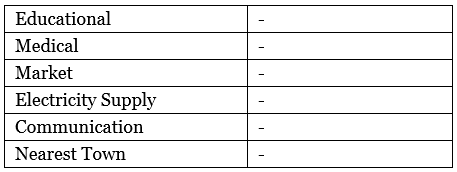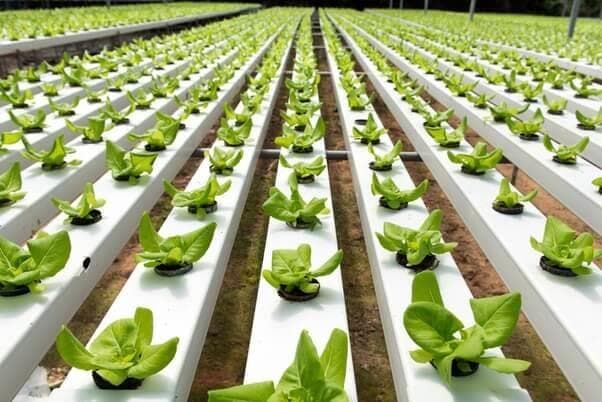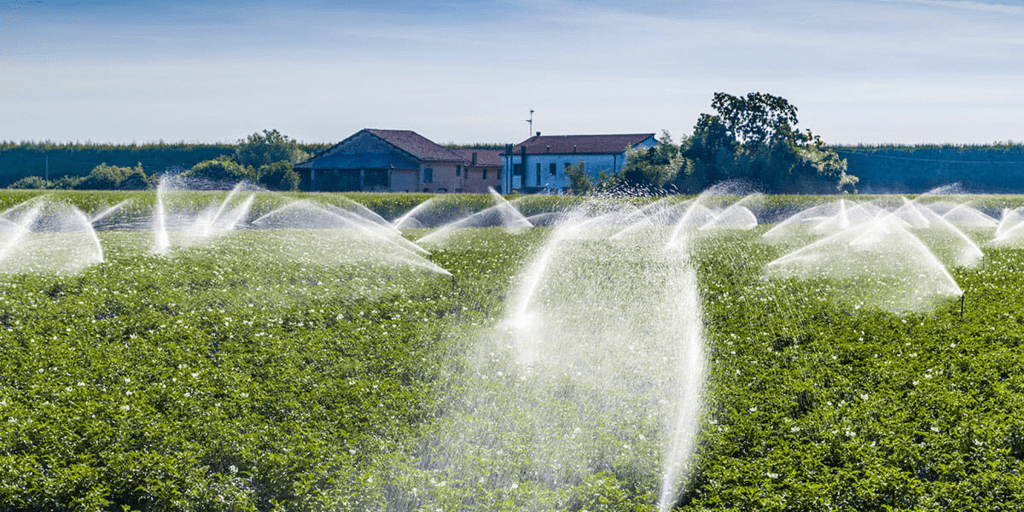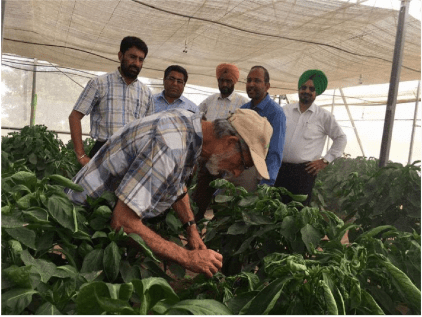NCERT Solutions for Class 9 Economics Chapter 1 - The Story of Village Palampur
Q1. Every village in India is surveyed once every ten years during the Census, and some of the details are presented in the following format. Fill up the following based on the information on Palampur
(a) LOCATION
(b) TOTAL AREA OF THE VILLAGE
(c) LAND USE (in hectares) (d) FACILITIES
(d) FACILITIES Ans:
Ans:
(a) LOCATION: Bulandshahar district, Western Uttar Pradesh
(b) TOTAL AREA OF THE VILLAGE: 226 hectares
(c) LAND USE (in hectares):
(d) FACILITIES:
Q2. Modern farming methods require more inputs which are manufactured in industry. Do you agree?
Ans: Yes, modern farming methods indeed require more inputs that are produced in industries.
- Traditional farming methods involve the use of relatively low-yielding seeds, which require less water for irrigation. Farmers following the traditional methods use cow dung and other natural manure as fertilisers. All these elements are readily available to the farmers. This makes them less dependent on industrial output.
 Modern Farming Method
Modern Farming Method - Modern farming methods, on the other hand, involve the use of high-yielding variety seeds. These seeds require a combination of chemical fertilisers and pesticides, agricultural implements like tractors, and proper irrigation facilities like electric tube wells to produce the best results. All these elements are manufactured in industries.
Q3. How did the spread of electricity help farmers in Palampur?
Ans:
- The spread of electricity transformed Palampur's irrigation system.
- Farmers previously used Persian wheels to draw water from wells for small fields.
- Electric tube wells replaced Persian wheels after electrification.
- The first tube well was installed by the Government.
- Later, farmers set up private tube wells.
- By the 1970s, the entire 200 hectares of irrigated land was cultivated.
Q4. Is it important to increase the area under irrigation? Why?
Ans: It is important to increase the land under irrigation because:
- Farming is the primary income source for most people in India, but less than 40% of the land can be used for growing crops.
- Farmers rely on unpredictable monsoon rains, and when rainfall is low, they face significant losses.
- Improving irrigation for more land would improve production of crops, make more land suitable for farming, and encourage farmers to try new methods without the fear of losing money.
 Modern Irrigation Method
Modern Irrigation Method
Q5. Construct a table on the distribution of land among the 450 families of Palampur.
Ans: The distribution of land among the 450 families of Palampur is as follows:
Q6. Why are the wages for farm labourers in Palampur less than the minimum wages?
Ans: The wages for farm labourers in Palampur are below the minimum wage due to several factors:
- Farm labourers like Dala often work on daily wages, making them vulnerable to fluctuations in demand.
- The government has set the minimum wage at Rs 300 per day, but many labourers, including Dala, earn only Rs 160.
- There is intense competition for jobs among labourers, leading many to accept lower wages.
- Large farmers may hire fewer workers due to mechanisation, limiting job availability.
As a result, many farm labourers remain among the poorest in the village.
Q7. In your region, talk to two labourers. Choose either farm labourers or labourers working at construction sites. What wages do they get? Are they paid in cash or kind? Do they get work regularly? Are they in debt?
Ans:
- I spoke with Satish and Raman, two construction labourers working on a gym and swimming pool in our colony. They earn about 150-200 rupees per day.
- Both labourers are from the Basti district of Uttar Pradesh and have migrated to Delhi for daily wage work. Their employment is not permanent.
- They do not have regular work and are always paid in cash by their contractor.
- Satish is currently in debt due to a loan taken for his son’s education expenses..
Q8. What are the different ways of increasing production on the same piece of land? Use examples to explain.
Ans: The land area under cultivation is practically fixed, so in order to increase the production from the same piece of land, we can use the following methods:
(a) Multiple Cropping
- It is the most common way of increasing production on a given piece of land. It means when two or more crops are grown on the same piece of land during a year, i.e., Indian farmers should grow at least two main crops in a year.
- In India, some farmers are growing the third crop over the past 20 years, as in Palampur, jowar and bajra are grown, and potato is the third crop.
(b) Modern Farming Methods
- Production on the same piece of land can also be increased by adopting modern farming methods.
- The Green Revolution in India is a remarkable example of it. Under modern farming, more cultivable area should be brought under high-yielding varieties of seeds and irrigation.
- The use of simple wooden ploughs must be replaced by tractors, and with increased use of farm machinery such as tractors, thrashers and harvesters, make cultivation faster and also help in increasing yield per hectare.
Q9. Describe the work of a farmer with 1 hectare of land.
Ans: A farmer with 1 hectare of land is considered a small farmer.
- Due to the small cultivation area, the yield is often low.
- To maximise production, the farmer requires money, usually:
- Borrowed from a moneylender at high interest rates.
- Sometimes must work as a labourer for the moneylender. - After cultivation:
- Produce is divided between personal use and selling in the market. - Most profits go to repaying the moneylender, leaving little for the farmer.
- The farmer relies primarily on family members for labor and support
Q10. How do the medium and large farmers obtain capital for farming? How is it different from the small farmers?
Ans:
- Medium and large farmers retain a part of their produce and sell the surplus in the market.
- This provides them with the required capital for farming. Most of them even use these earnings to provide loans to small farmers.
- By charging high rates of interest on these loans, they succeed in furthering their earnings.
- Thus, medium and large farmers have ready capital with them from one agricultural season to the next.
- The situation of small farmers is in contrast. They begin an agricultural season with no working capital and end the season on more or less the same note.
- To begin working on their farms, they take loans at high rates of interest. Due to the small sizes of their farms, their total production is small.
- Their produce is kept for their needs or for repaying their lenders. As a result, they have no surplus to sell in the market and, thus, have limited savings.
Q11. On what terms did Savita get a loan from Tejpal Singh? Would Savita’s condition be different if she could get a loan from the bank at a low rate of interest?
Ans: The terms of a loan of Savita taken from Tejpal Singh are:
- She took a loan of Rs. 3,000 at an interest rate of 24 per cent.
- She would have to repay the loan in four months.
- She also has to work in Tejpal’s field as a farm labourer during the harvesting season at Rs. 100 per day.
The bank could have provided her with a loan at a low rate of interest. In addition, she would have devoted more time to her own field of 1 hectare instead of working as a farm labourer for Tejpal Singh.
Q12. Talk to some old residents in your region and write a short report on the changes in irrigation and changes in production methods during the last 30 years.
Ans:
- On talking to two old residents, Ramlal and Dharam Singh, I came to know about the irrigation methods that were traditionally in use in our area.
- They told me that earlier, they were dependent on rainfall, and later used Persian wheels to draw water to draw water from the wells.
- With the development of technology, tube wells were used for better and effective irrigation.
- In the farming methods, traditionally, they ploughed the field with ploughs drawn by bullocks, which was a very difficult and time-consuming process.
- They used ordinary seeds and cow dung manure for fertilisation.
- However, with changes in technology, the farmers started using HYV seeds, chemical fertilisers, insecticides, pesticides and modern machinery like tractors and threshers.
- This has led to an increase in yield per hectare and improved the lives of the farmers.
Q13. What are the non-farm production activities taking place in your region? Make a short list.
Ans: Non-farm production activities in the region include:
- Dairy: Many families engage in dairy farming, raising buffaloes and producing milk.
- Small-scale manufacturing: For example, Mishrilal produces jaggery using a mechanical sugarcane crusher.
- Shopkeeping: Local shopkeepers buy goods from wholesale markets and sell them in the village.
- Food shops: Some individuals near the bus stand operate shops selling snacks and other food items.
- Transportation: People provide transport services, using various vehicles to carry passengers and goods.
- Computer classes: Kareem has opened a computer training centre, employing two qualified women.
Q14. What can be done so that more non-farm production activities can be started in villages?
Ans: To promote non-farm production activities in villages, three key actions should be taken:
- Financial Support: The government should establish schemes that provide affordable loans to landless labourers and small farmers. This will enable them to start small businesses, either individually or as a community.
- Skill Development: In addition to financial assistance, the government should create rural workshops. These workshops will help villagers improve their skills, making them more capable of engaging in various non-farm activities.
- Infrastructure Improvement: The government must focus on enhancing the infrastructure in villages. Better roads and transport links will connect rural areas with urban markets, facilitating the sale of goods and services.
 Rural Workshop
Rural Workshop
|
55 videos|525 docs|78 tests
|
FAQs on NCERT Solutions for Class 9 Economics Chapter 1 - The Story of Village Palampur
| 1. What are the main features of the village Palampur as described in the chapter? |  |
| 2. How is agriculture important to the economy of Palampur? |  |
| 3. What are the different types of farming practices followed in Palampur? |  |
| 4. How does the village of Palampur utilize its resources for development? |  |
| 5. What role do small-scale industries play in the village economy of Palampur? |  |






















